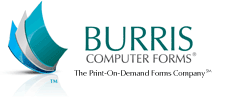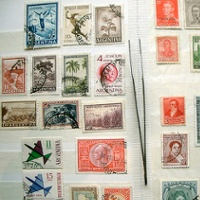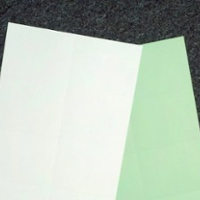A Brief History of How Postcards Originated
by Chelsea Camper | Last Updated July 19, 2019How much do you think the first postage stamp cost the sender of the postcard? How much did it cost the receiver? Youd be surprised.
Back when postcards were first starting out, it didn’t cost anything to send a postcard. It was the receiver of the postcard that had to pay. How much did the receiver of the postcard have to pay in order to get their postcard? One penny. You have to remember that a penny was much stronger back in the 1800s and early 1900s. According to the Westegg Inflation Calculator, $0.01 in 1840 equates to $0.22 in today’s market.
This is obviously a radically different approach to postcard marketing than what we see today. Let’s take a look at how postcards developed throughout the years.
1837
Before 1837 letters were charged based on the distance the letter had to travel from point A to point B. This meant it wouldn’t cost the receiver near as much to get a letter from Richmond in DC as it would to receive a letter from Richmond in Los Angeles. If the receiver refused to receive the postcard, then the postman would not get paid, which was bad news for the postal service.
This all changed when, in Great Britain, Rowland Hill proposed that letters be charged by weight and that the sender would be responsible for payment instead of the receiver.
1840
Three years later, Hill’s proposal started to come into effect in Britain with “uniform penny postage.” While the government didn’t exactly go with Hill’s recommendations, it was now possible for a sender to pay 1 penny to send a letter to someone as long as the letter was under half an ounce. The heavier the letter, the more it would cost to send.
Not to mention, if it was the receiver paying for the postage, the postage would be doubled. While it made more sense for the sender to pay (especially since it would be cheaper) there were still some letters that were to be paid for by the receiver.
1865
A German postal official named Dr. Heinrich von Stephan was the first to submit a proposal for a postcard-like object. Letters had always been the main form of sending mail; having all of the information of the mail piece displayed in plain sight on a single piece of postcard paper was quite different.
Because it was so different, it was heavily debated in Germany for several years before it was allowed.
1869
Even though Germany was the first to propose the idea of a postcard, it was Austria that first implemented it. During this time no photos were allowed on the official postcards and private companies had not begun to produce postcards. All postcards were produced by the official postal service of each country.
Austria was the first country to publish the postcard, but not the first to conceive of it. , a year after Austria introduced the card to their country. Within two years, the postcard had quickly spread across Europe.
1870
Finally, a year after Austria implemented postcards into their mailing system, Germany started to allow postcards to be sent in the mail. However, they were still only official postcards created by the country’s government. From then on, postcards grew wildly popular accross most of Europe.
1871
Canada officially adopted postcards into their mailing system.
1872
Starting in 1872, postcards printed with advertisements could be printed by private companies as long as they were printed with an official pre-paid stamp. These postcards mainly featured line drawings.
1873
The United States officially began to issue postcards, even though stamped cards had been allowed in the US since 1861.
1875
There was a meeting in Switzerland by delegates from 22 different countries to decide on a standard postage rate and a card that could be exchanged between the countries. This meeting of delegates first established themselves as the General Postal Union, but renamed themselves the Universal Postal Union four years later.
1894
Finally, in 1894 private companies could produce postcards with images on them that could be mailed with an adhesive postage stamp. At first the postcards were printed mainly using engravings to create line drawings and the images couldn’t cover the entire back of the postcard.
Because of postal regulations, the front of the postcard is where the stamp and address had to go; no other writing could be placed on the front of the postcard. The whole postcard message and any images had to go on the back of the postcard.
Late 1890s
Printing technology advanced quickly in the late 1890s and early 1900s. Near the end of the nineteenth century many photographers were using lithography, photogravure, and other photograph printing techniques to print their photographs onto postcards.
From there, postcards became quite popular, printing techniques advanced, and the cost of postage increased. It took nearly a century for the world to prepare for postcards, officially accept them, and allow for private companies to produce them.
Next time you get a postcard in the mail think about what changes the world had to make in order for you to receive that postcard the way it’s sent and produced now.
Excited about postcards? Want to start printing your own? Download our Print Your Own Getting Started Guide today!
Research: Smithsonian Libraries, School Net
Image: Tobyotter





